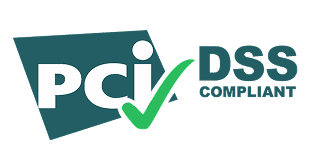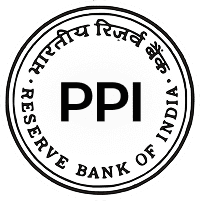A Flexible Benefit Plan (FBP) is a company-sponsored scheme that allows its employees to customize their salary packages as per their wishes. Under FBP, an employee can pick and choose their salary components from a basket of options provided by the company. These components include medical expenses, conveyance, book allowance, etc. This helps in tailoring the compensation package to suit the employee’s lifestyle and financial goals better. In addition to customizing the compensation package, FBP allowance also offers substantial tax-saving opportunities by adopting the optional route under Section 80C and Section 80D of the Income Tax Act. This reduces the taxable income of the employee and helps them to save tax while maximizing their benefits. Flexible Benefit Plan enhances the satisfaction of the employee, helps in financial planning, and maximizes tax benefits for employees.
Introduction
Flexible Benefit Plans (FBP) are increasingly becoming an integral component of modern salary structures, where employees can customize their remuneration in a manner that best suits their requirements. With the business world undergoing constant changes and the workforce becoming highly dynamic and personalized, the key to career progression lies in being able to understand how FBPs work, how to optimize your salary and why it is important for both employers and employees.
This blog is a comprehensive guide to understanding various aspects related to Flexible Benefit Plans – what they are, how they work, why we need them, how to declare them and so on. By the end of this blog, you will have a holistic understanding of how FBPs can enhance your financial planning and ultimately help you lead a more satisfying work life.
What is a Flexible Benefit Plan (FBP)?
A Flexible Benefit Plan (FBP) is a systematic way of compensating workers which allows them to customize the components of their salary based on their preferences and the financial needs of their families. Unlike other salary packages that give fixed allowances, FBP allowance is more flexible and employees can decide how they allocate a particular portion of their salary to manage their finances better and reduce their tax burden.
Understanding the Concept of FBP
The most important feature of a Flexible Benefit Plan is that it allows a company’s employees to select one or more options as to the composition of their salary. The most commonly utilized components of a Flexible Benefit Plan are House Rent Allowance (HRA), Leave Travel Allowance (LTA), Medical Allowance, etc. Each of these components has certain prescribed limits set by the employer and the employees are free to choose their combination within these limits, which helps them to plan their take-home pay while minimizing taxes.
For example, an employee may want to increase the proportion of salary allocated towards housing rent allowance (HRA) if he or she lives in a rented house, and therefore reduce the taxable income. Similarly, a person who does not have substantial medical expenses may want to reduce the Medical Allowance component, increasing the other allowances or the basic pay.
What is FBP Declaration: The Process
Declaration of FBP allowance is made at the start of each financial year. Employees need to submit their salary component preference through a formal declaration process, which is normally done by their payroll or HR department. That declaration of choice governs how the salary amount will be disbursed across the year, and the employee would have to submit documents such as rent receipts or medical bills to support their claims.
This declaration must be considered very carefully by the employee, because once filed, changes to the Flexible Benefit Plan structure might not be possible, and mistakes or omissions can result in a suboptimal salary structure, which could ultimately lead to higher taxes or lower take-home pay.
Benefits of FBP for Employees
The most important advantage of an FBP allowance is that it allows you to customize your salary to your lifestyle and financial goals. The precise allocation of the various salary components allows you to minimize your tax burden and maximize your disposable income. FBPs are highly flexible and adaptable. You can change your salary plan as your circumstances change: if you decide to buy a house in a different city, if you need different medical coverage, or if you travel for work more or less frequently.
Flexible Benefit Plan is a means for employees to regain autonomy over how they receive their pay. By knowing the nuances of FBP declaration and the flexi components in salary, one can make the most of these benefits.
Components of a Flexible Benefit Plan
One of the most attractive features of a Flexible Benefit Plan (FBP) is the range of components it incorporates, thereby enabling an employee to structure their take-home salary according to individual and financial requirements. Each of these components serves a very distinct purpose and together go a long way in helping an employee maximize the tax-saving potential of their compensation package. Let’s take a look at the main flexi components in salary that make up an FBP.
Common Components of an FBP
A Flexible Benefit Plan typically consists of several components, each one offering different benefits depending on the employee’s lifestyle and financial objectives. Here are the most common components of an FBP:
- House Rent Allowance (HRA): HRA is an important part of an FBP, especially for employees who stay in rented accommodation. It allows for substantial tax savings on the employee’s taxable income if the employee can produce genuine rent receipts.
- Leave Travel Allowance (LTA): LTA is an allowance claimed by the employee for travel within India. The allowance is tax-free but is allowed only if the employee travels with their family members as per the income tax rules.
- Medical Reimbursement: Employees can claim for medical expenses up to a specified limit. They have to submit medical bills as proof. It is a helpful component for those employees who have regular medical expenses as this reduces their taxable income.
- Conveyance Allowance: This section covers the cost of commuting from the employee’s place of residence to his place of work. Though the conveyance allowance is not high, it still offers some tax relief.
- Special Allowance: This is a residual component that doesn’t fit into any category. It is taxable and is usually used to balance the remuneration structure.
- Meal Coupons/Vouchers: Some employers also provide meal vouchers or coupons as part of the Flexible Benefit Plan, which is non-taxable up to a certain amount and can be used at specific shops or outlets to buy food and beverages.
Flexi Components and Their Benefits
Component |
Description |
Tax Benefit |
House Rent Allowance |
Covers rent expenses for employees in rented housing. |
Significant tax deductions with valid receipts. |
Leave Travel Allowance |
Covers domestic travel expenses for the employee and family. |
Tax-free when claimed with proper documentation. |
Medical Reimbursement |
Reimbursement for medical expenses up to a set limit. |
Tax-free up to a specified amount with receipts. |
Conveyance Allowance |
Covers commuting expenses between home and workplace. |
Modest tax relief. |
Special Allowance |
Miscellaneous allowance, fully taxable. |
No tax benefit. |
Meal Coupons |
Non-taxable meal vouchers for food and beverages. |
Tax-free up to a specified limit. |
How to Optimize Your FBP
To maximize the benefits of an FBP allowance, employees should carefully consider their financial needs and select components that align with their lifestyle. For example, if you’re renting an apartment, allocating a higher portion of your salary to HRA can significantly reduce your taxable income. On the other hand, if you rarely travel for personal reasons, it might be wise to allocate less to LTA and more to other allowances that provide better tax benefits.
It is also important to keep track of all relevant receipts and documentation, as these will be necessary for claiming the associated tax benefits. Failure to provide proper documentation can lead to a reassessment of your tax liabilities, potentially reducing the effectiveness of your Flexible Benefit Plan.
Strategically selecting the right flexi components in salary can lead to substantial tax savings and a more personalized compensation structure. Now, you can maximize your FBP to make sure that your salary can enjoy immediate and long-term rewards.
Benefits of Implementing an FBP in Organizations
These days in a competitive job market, flexibility in a compensation package is the key to attract and retain the best talent. FBP allowance increases the level of morale and motivation in the employees. Moreover, it helps the company stay financially healthy, by effectively controlling the payroll expenses and tax liabilities.
Benefits for Employers
- Attracting and Retaining Talent: In an era where employees are demanding more personalized and flexible arrangements, a Flexible Benefit Plan can be a strong differentiator. Organizations that provide employees with the flexibility to customize their compensation packages can be attractive to prospective employees who seek financial flexibility. At the same time, providing employees with the opportunity to optimize their earnings based on their individual preferences may lead to better retention rates.
- Cost-Effective Compensation Management: FBPs can help control compensation costs for employers since employees often select components that work best for their situation. By allowing employees to choose the right amount for each component, employers can provide competitive salaries without requiring large increases in the overall payroll budget.
- Tax Efficiency: FBPs are structured to be tax-efficient for the organization and the employee. By allowing the employee to use part of the salary allocated to HRA, LTA, and medical reimbursements, the organization can reduce the overall tax liability. Since this benefit is not seen by the employees as part of their taxable income, FBPs are often seen as an attractive addition to the compensation package.
- Enhanced Employee Engagement and Satisfaction: Employees will be more likely to feel much more valued and motivated if they have the freedom to customize their benefits as per their unique needs, knowing their employer is making a greater effort to help them manage their finances more effectively. It will lead to greater productivity and lower turnover.
Benefits for Employees
Flexible Benefits Plans (FBP) allow employees to customize their benefits, including health benefits (such as medical and dental insurance), allowances, and reimbursements. FBP allows employees to have a more personalized and financially efficient compensation package through customization.
- Personalized Financial Planning: One of the biggest benefits of an FBP allowance for employees is the ability to plan their taxable income and indirect tax savings. This can be done by optimizing HRA and LTA, as well as adjusting other allowances to achieve a desired balance between take-home pay and indirect tax savings.
- Tax Savings: FBPs offer various tax-saving opportunities, as a large fraction of salary can be allocated by the employee to tax-free components. For example, if the employee chooses to allocate a portion of the salary to medical reimbursement or meal coupons, the taxable income will be reduced substantially.
- Flexibility and Convenience: Along with financial planning, FBPs allow employees to adjust their benefit structure according to their personal needs when they move to a new home, marry, or start a family.
- Improved Financial Well-Being: By allowing employees to restructure their salaries, FBPs contribute to their financial well-being. Employees would be able to minimize their effective tax burden (through certain exemptions in taxation) and channel the funds to their desired purpose.
How to Declare FBP: A Step-by-Step Guide
Getting the declaration of your Flexible Benefit Plan (FBP) right is important to make sure you get the most out of your salary package. Your declaration must also reflect your current financial situation, future needs, and tax planning strategies. Here is a step-by-step guide detailing how you should declare your FBP allowance and the pitfalls one needs to avoid.
- Review Your Salary Structure: Before initiating the FBP declaration process, it’s imperative to scrutinize your employer’s salary structure. Identify the various components of your salary and the flexible components that can be customized under FBP.
- Assess Your Financial Needs: An effective way to maximize your Flexible Benefit Plan would be to tweak it according to your personal financial needs and lifestyle. For example, if you are a frequent traveler for leisure or work-related reasons, LTA would make more sense.
- Understand the Tax Implications: The individual components of the FBP allowance are taxed differently. Understanding that will help you make the best use of its tax savings. For instance, while HRA and LTA are fully tax-exempt, Special Allowance is fully taxable. Often, balancing these various components for your financial goals can go a long way in reducing your taxable income.
- Submit the FBP Declaration Form: After making up your mind about how to split your salary components, fill out the Flexible Benefit Plan declaration form your employer provides. This will require you to state the amounts that you wish to allocate to each flexible component. Make sure that your allocations are within the limits set by your employer and the tax laws.
- Provide Necessary Documentation: To confirm your claim under the FBP allowance scheme, you must provide supporting documents. All documents should be accurate and submitted on time to avoid any processing delays.
- Review and Confirm: When submitting your FBP declaration, check the summary your employer provides you with to ensure that everything is correct. Ensure that the right components have been allocated.
- Reassess Annually: Your financial condition can shift yearly, so you should revisit your FBP declaration every year. During the next financial year, you can adjust your allocations accordingly to the new circumstances.
Common Mistakes to Avoid
If you want to be successful, it’s important to avoid the things that can cause failure. These blunders will undermine you and derail your efforts. By learning from these mistakes, you can better handle challenges and succeed.
- Overestimating Tax Savings: One common mistake employees make is overestimating the tax savings from FBP. It’s crucial to understand the tax exemptions available under each component and not assume that all components are equally beneficial.
- Inadequate Documentation: Failing to provide the necessary documentation can result in the rejection of your Flexible Benefit Plan claims, leading to higher taxable income. Always keep detailed records of your expenses and submit them promptly.
- Ignoring Future Needs: Even as you are tempted to maximize the tax benefits you get in the first year, think about what your future needs might be. If you plan to move to a new city, perhaps you might want to change your HRA allocation.
- Last-Minute Declarations: If you push back the declaration of your FBP, you might leave yourself less time to think it through. If you want to optimize your decisions, start thinking about it early in the financial year.
Example of an FBP Declaration
The FBP allowance declaration process involves allocating varying percentages of the basic salary to a bunch of items, such as Basic Pay, HRA, LTA, Medical Allowance, and so on.
Say a salary package contains these components. After evaluating his financial needs, Sahil judges that he needs to set aside 30 per cent of the basic salary as HRA, 10 per cent as LTA, and 5 per cent as Medical Allowance. He fills in his declaration form with these allocations. He then produces rent receipts and medical bills as proof of these allocations and submits the declaration form along with them. The form is filled and submitted at the beginning of the year, and declarations are filed based on this. In this manner, Sahil reduces his taxable liability and increases his net take-home pay.
Conclusion
Flexible Benefit Plans (FBPs) are a great way of managing an employee’s salary structure and the employer’s compensation cost. Based on the needs of the employee, they can be allocated various components such as HRA, LTA, medical reimbursements, etc., which can help reduce the taxable income of the employee, increasing their net take-home pay. These FBPs have become a great tool for employers to attract and retain employees. By allocating various components of the FBP, the employer can control and manage the compensation cost. To understand the Flexible Benefit Plan, one should be aware of the various components that are part of the plan, the declaration process of the plan, and the tax implications.
FAQs
What is a Flexible Benefit Plan (FBP)?
A Flexible Benefit Plan is a scheme of compensation which enables employees to structure their salary components as per their financial needs and personal preferences. The idea behind the Flexible Benefit Plan is to provide flexibility to employees in choosing their salary components, which would help them maximize their take-home pay and tax savings as well.
How does an FBP differ from a traditional salary structure?
Within a traditional salary structure, the components and their proportions are set and defined by the employer. The salary is negotiated in a one-to-one relationship with each employee. In contrast, a Flexible Benefit Plan offers employees a certain degree of flexibility because it allows individuals to choose the proportions of their salary to be paid into different components, with the potential to increase take-home pay.
What are the tax benefits of an FBP?
The primary tax benefit of a Flexible Benefit Plan comes from the ability to allocate salary components that are either partially or fully exempt from tax. For example, HRA and LTA are tax-exempt up to a certain limit, and medical reimbursements are tax-free up to a specified amount. By strategically allocating these components, employees can lower their overall tax burden.
Can I change my FBP components during the financial year?
Normally, the allocation of FBP allowance elements is set at the beginning of the financial year and cannot be changed until the end of the year. Some employers allow mid-year changes, but this is usually only if you have a major life change (such as moving out of the area or changing family circumstances). Check with your HR department for specifics on when you could change your FBP during the year.
What documents are required for FBP declaration?
The documents for the Flexible Benefit Plan declaration are different for each component selected. You need to maintain rent receipts for HRA, medical bills for medical reimbursement and travel tickets for LTA to be submitted for claims to get the associated tax benefits.
How do I decide the best allocation for my FBP?
Based on your current financial needs and future plans, you have to allocate your FBP allowance optimally. If you are paying rent, you can allocate more towards HRA. If you expect to have medical expenses, then you must allocate more towards medical reimbursement.
What happens if I don’t submit the required documents for FBP?
If you don’t submit the documents you need for your Flexible Benefit Plan on time, your employer might not be able to grant you the associated tax-exempt status. Your taxable income could also go up. You could end up paying more in taxes, meaning less after-tax pay. It’s important to keep all the associated receipts and submit them promptly.
Is there a limit to how much I can allocate to each FBP component?
Yes, there are limits to how much can be allocated to each Flexible Benefit Plan component, typically set by the employer and governed by tax laws. For example, the maximum HRA exemption is calculated based on a percentage of your basic salary, the rent paid, and the city you live in. Similarly, other components like LTA and medical reimbursement have specific limits. It’s important to understand these limits to optimize your FBP allowance allocation.
Can FBPs vary between different employers?
Yes, there are differences among employers in how an FBP allowance is structured and what components it contains. However, the underlying principles can be the same.
How does FBP affect my overall compensation package?
A Flexible Benefit Plan will increase your overall compensation package by enabling you to optimize your take-home pay. This is achieved by structuring your salary in a tax-efficient manner. Although the total salary package remains the same, allocating certain components, such as HRA, LTA, medical reimbursement, etc., as per your needs helps reduce your tax liabilities, which means more money is in your pocket.








